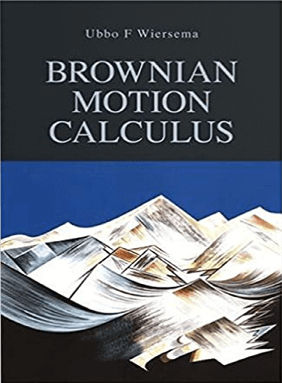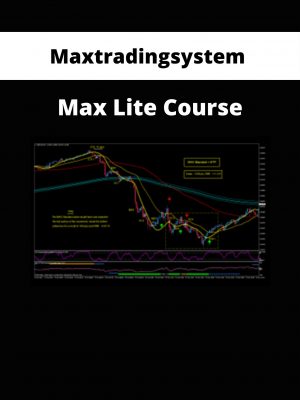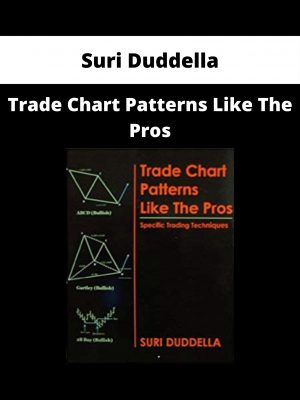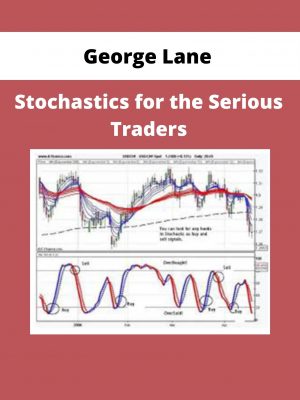Ubbo F.Wiersema – Brownian Motion Calculus
$30
Shopping Instructions:
- DISCOUNT 15% : SHOP15
- Product Delivery: Within 1 – 12 hours after purchase.
Brownian Motion Calculus presents the basics of Stochastic Calculus with a focus on the valuation of financial derivatives. It is intended as an accessible introduction to the technical literature.
Ubbo F.Wiersema – Brownian Motion CalculusDescriptionBrownian Motion Calculus presents the basics of Stochastic Calculus with a focus on the valuation of financial derivatives. It is intended as an accessible introduction to the technical literature. A clear distinction has been made between the mathematics that is convenient for a first introduction, and the more rigorous underpinnings which are best studied from the selected technical references. The inclusion of fully worked out exercises makes the book attractive for self study. Standard probability theory and ordinary calculus are the prerequisites. Summary slides for revision and teaching can be found on the book website. ABOUT THE AUTHORUBBO WIERSEMA was educated in Applied Mathematics at Delft, in Operations Research at Berkeley, and in Financial Economics and Financial Mathematics at the London School of Economics. He joined The Business School for Financial Markets (the ICMA Centre) at the University of Reading, UK, in 1997, to develop and teach its curriculum in Quantitative Finance. Prior to that, he was a derivatives mathematician at the merchant bank Robert Fleming in the City of London. Before that his career was focused in Operations Research in the US and Europe.
TABLE OF CONTENTSPreface. 1 Brownian Motion. 1.1 Origins. 1.2 Brownian Motion Specification. 1.3 Use of Brownian Motion in Stock Price Dynamics. 1.4 Construction of Brownian Motion from a Symmetric Random Walk. 1.5 Covariance of Brownian Motion. 1.6 Correlated Brownian Motions. 1.7 Successive Brownian Motion Increments. 1.8 Features of a Brownian Motion Path. 1.9 Exercises. 1.10 Summary. Download immediately Ubbo F.Wiersema – Brownian Motion Calculus 2 Martingales. 2.1 Simple Example. 2.2 Filtration. 2.3 Conditional Expectation. 2.4 Martingale Description. 2.5 Martingale Analysis Steps. 2.6 Examples of Martingale Analysis. 2.7 Process of Independent Increments. 2.8 Exercises. 2.9 Summary. 3 Itō Stochastic Integral. 3.1 How a Stochastic Integral Arises. 3.2 Stochastic Integral for Non-Random Step-Functions. 3.3 Stochastic Integral for Non-Anticipating Random Step-Functions. 3.4 Extension to Non-Anticipating General Random Integrands. 3.5 Properties of an Itō Stochastic Integral. 3.6 Significance of Integrand Position. 3.7 Itō integral of Non-Random Integrand. 3.8 Area under a Brownian Motion Path. 3.9 Exercises. 3.10 Summary. 3.11 A Tribute to Kiyosi Itō. Acknowledgment. 4 Itō Calculus. 4.1 Stochastic Differential Notation. 4.2 Taylor Expansion in Ordinary Calculus. 4.3 Itō’s Formula as a Set of Rules. 4.4 Illustrations of Itō’s Formula. 4.5 Lévy Characterization of Brownian Motion. 4.6 Combinations of Brownian Motions. 4.7 Multiple Correlated Brownian Motions. 4.8 Area under a Brownian Motion Path – Revisited. 4.9 Justification of Itō’s Formula. 4.10 Exercises. 4.11 Summary. 5 Stochastic Differential Equations. 5.1 Structure of a Stochastic Differential Equation. 5.2 Arithmetic Brownian Motion SDE. 5.3 Geometric Brownian Motion SDE. 5.4 Ornstein–Uhlenbeck SDE. 5.5 Mean-Reversion SDE. 5.6 Mean-Reversion with Square-Root Diffusion SDE. 5.7 Expected Value of Square-Root Diffusion Process. 5.8 Coupled SDEs. 5.9 Checking the Solution of a SDE. 5.10 General Solution Methods for Linear SDEs. 5.11 Martingale Representation. 5.12 Exercises. 5.13 Summary. 6 Option Valuation. 6.1 Partial Differential Equation Method. 6.2 Martingale Method in One-Period Binomial Framework. 6.3 Martingale Method in Continuous-Time Framework. 6.4 Overview of Risk-Neutral Method. 6.5 Martingale Method Valuation of Some European Options. 6.6 Links between Methods. 6.6.1 Feynman-Kač Link between PDE Method and Martingale Method. 6.6.2 Multi-Period Binomial Link to Continuous. 6.7 Exercise. 6.8 Summary. 7 Change of Probability. 7.1 Change of Discrete Probability Mass. 7.2 Change of Normal Density. 7.3 Change of Brownian Motion. 7.4 Girsanov Transformation. 7.5 Use in Stock Price Dynamics – Revisited. 7.6 General Drift Change. 7.7 Use in Importance Sampling. 7.8 Use in Deriving Conditional Expectations. 7.9 Concept of Change of Probability. 7.10 Exercises. 7.11 Summary. 8 Numeraire. 8.1 Change of Numeraire. 8.2 Forward Price Dynamics. 8.3 Option Valuation under most Suitable Numeraire. 8.4 Relating Change of Numeraire to Change of Probability. 8.5 Change of Numeraire for Geometric Brownian Motion. 8.6 Change of Numeraire in LIBOR Market Model. 8.7 Application in Credit Risk Modelling. 8.8 Exercises. 8.9 Summary. ANNEXES. A Annex A: Computations with Brownian Motion. A.1 Moment Generating Function and Moments of Brownian Motion. A.2 Probability of Brownian Motion Position. A.3 Brownian Motion Reflected at the Origin. A.4 First Passage of a Barrier. A.5 Alternative Brownian Motion Specification. B Annex B: Ordinary Integration. B.1 Riemann Integral. B.2 Riemann–Stieltjes Integral. B.3 Other Useful Properties. B.4 References. C Annex C: Brownian Motion Variability. C.1 Quadratic Variation. C.2 First Variation. D Annex D: Norms. D.1 Distance between Points. D.2 Norm of a Function. D.3 Norm of a Random Variable. D.4 Norm of a Random Process. D.5 Reference. E Annex E: Convergence Concepts. E.1 Central Limit Theorem. E.2 Mean-Square Convergence. E.3 Almost Sure Convergence. E.4 Convergence in Probability. E.5 Summary. Answers to Exercises. References. Index. Forex Trading – Foreign Exchange Course Want to learn about Forex? Foreign exchange, or forex, is the conversion of one country’s currency into another. |
Related products
Forex & Trading
Forex & Trading
Forex & Trading
Forex & Trading
Forex & Trading
Forex & Trading












